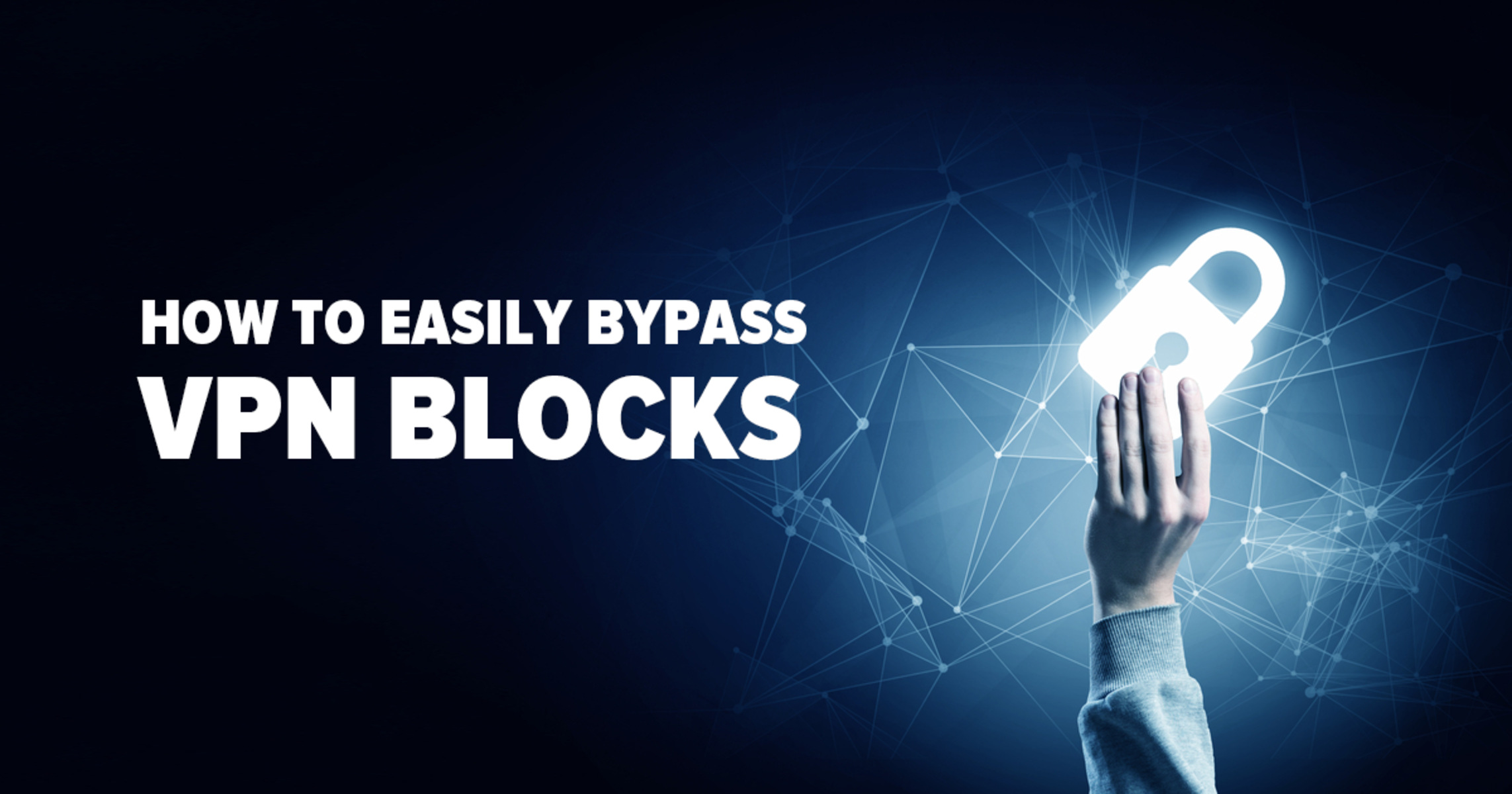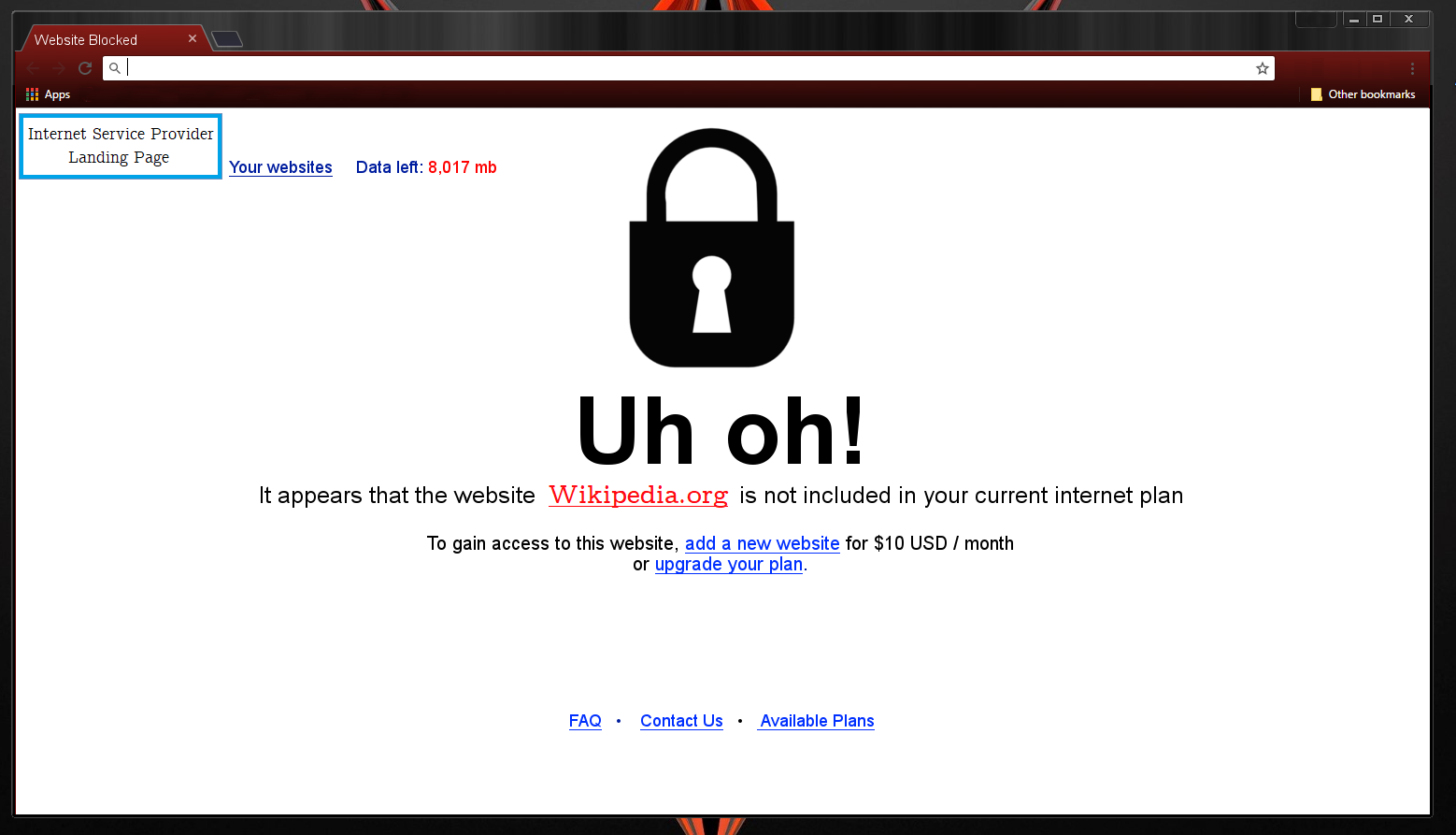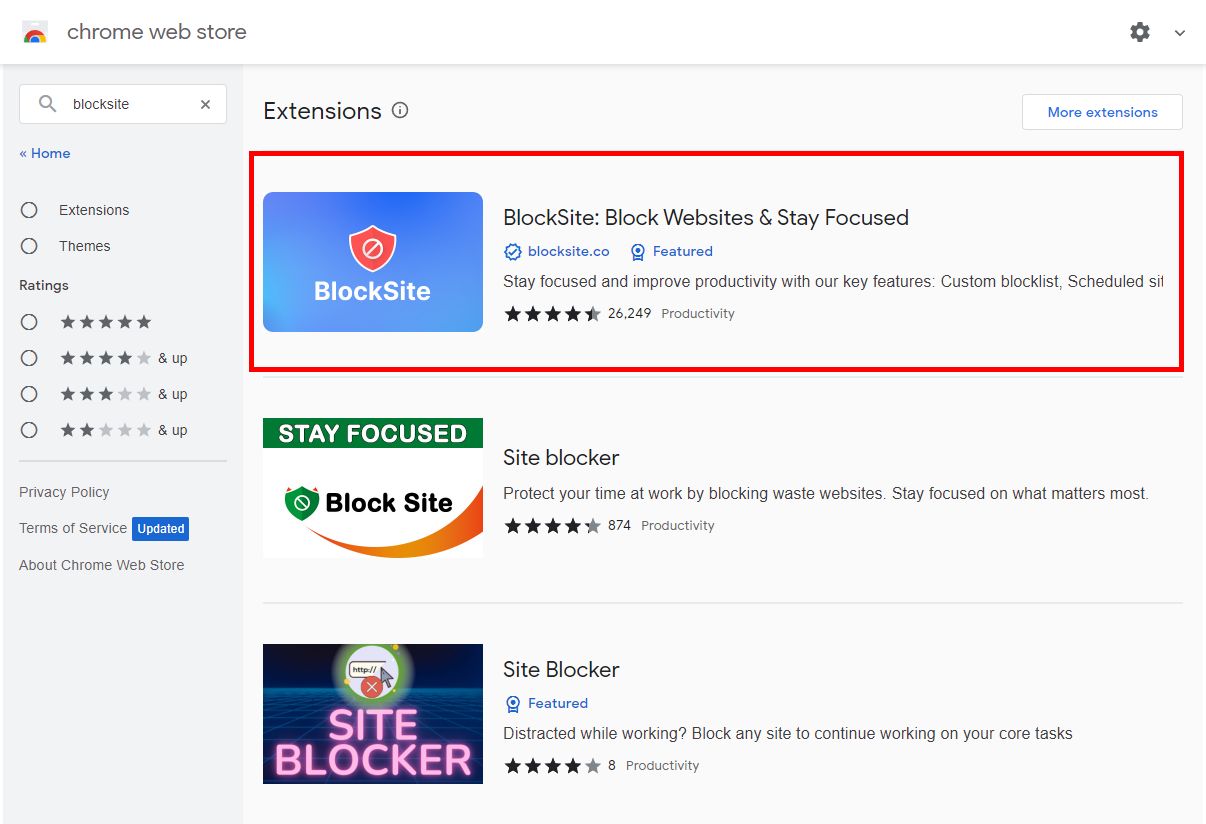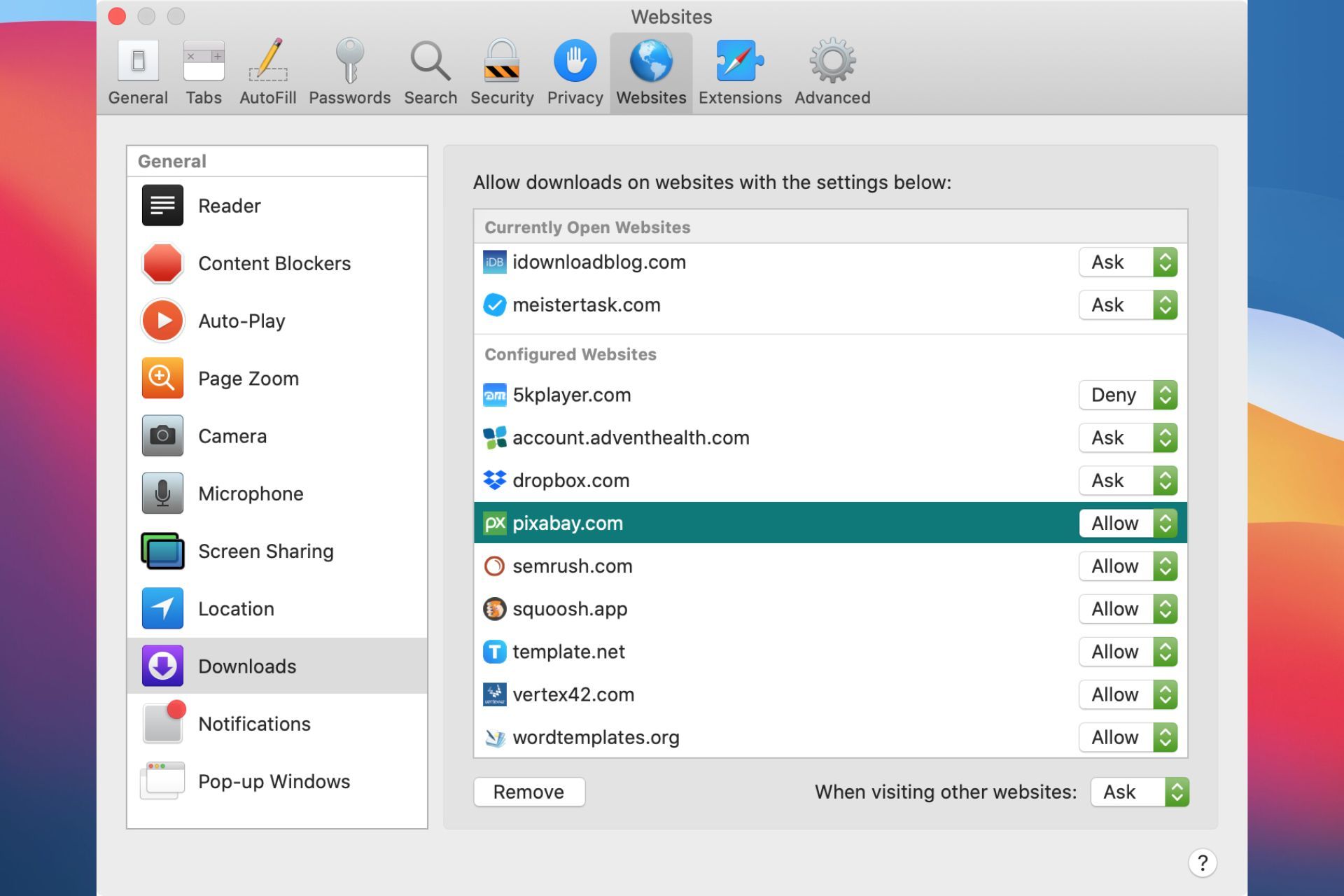Introduction
With the increasing demand for online privacy and security, Virtual Private Networks (VPNs) have become a popular choice for internet users. VPNs provide a secure and encrypted connection, allowing users to browse the internet anonymously and bypass geo-restrictions. However, there are instances when VPN users may encounter VPN blocks, preventing them from accessing certain websites or services.
VPN blocks are implemented by organizations, governments, or content providers to restrict access to their websites or services. These blocks can be frustrating, especially when you rely on your VPN for privacy and to access censored content. Fortunately, there are several methods you can employ to bypass VPN blocks and regain access to the content you want.
In this article, we will explore various methods that can help you bypass VPN blocks. These methods range from simple adjustments to more advanced techniques, ensuring that you can continue to enjoy the privacy and accessibility that VPNs offer.
If you’re tired of being blocked by VPN restrictions, read on to discover effective strategies to overcome these barriers and reclaim your internet freedom.
Understanding VPN Block
Before diving into how to bypass VPN blocks, it’s essential to understand what a VPN block is and why it occurs. VPN blocks are mechanisms put in place by certain entities to prevent VPN users from accessing specific websites or online services. These blocks are typically implemented by organizations, governments, or content providers to enforce regional restrictions or maintain control over their platforms.
VPN blocks can take various forms, such as IP blocking, Deep Packet Inspection (DPI), DNS filtering, or even blocking specific VPN protocols. IP blocking involves identifying and blocking the IP addresses associated with VPN servers. DPI analyzes the data packets passing through a network to identify VPN traffic and block it.
DNS filtering targets the Domain Name System (DNS) requests made by VPN users. When a request is made to access a website or service through a VPN, the DNS request may be redirected or blocked, preventing access to the requested content. Additionally, some VPN blocks target specific VPN protocols, such as OpenVPN or L2TP, effectively rendering those protocols ineffective.
VPN blocks are commonly employed by streaming platforms, governments, and certain organizations to restrict access to region-specific content or maintain control over information flow. Streaming platforms, for example, implement VPN blocks to enforce regional licensing agreements and prevent users from accessing content that is not available in their region.
Understanding why VPN blocks exist can help you navigate and find effective ways to bypass them. In the following sections, we will explore several methods that can help you bypass VPN blocks and regain access to restricted content or services.
Methods to Bypass VPN Block
Encountering a VPN block can be frustrating, but there are several effective methods you can employ to bypass these restrictions and regain access to the content or services you desire. Here are nine methods that can help you bypass VPN blocks:
- Switching VPN Servers: If you’re facing a VPN block on a specific server, try switching to a different server within your VPN provider’s network. Different servers may have different IP addresses, making it more difficult for the blocking mechanism to identify and block your connection.
- Using a Different VPN Protocol: Some VPN blocks target specific protocols. By switching to a different VPN protocol, you can evade these blocks and establish a successful connection. Popular VPN protocols include OpenVPN, SSTP, L2TP/IPsec, and IKEv2.
- Changing VPN Settings: Tweaking your VPN settings can sometimes help bypass blocks. For example, enabling the “Obfuscation” or “Stealth” mode in your VPN client can disguise your VPN traffic as regular internet traffic, making it harder to detect and block.
- Enabling Stealth Mode: Some VPN providers offer stealth mode, which adds an extra layer of obfuscation to your VPN traffic. This makes it even more challenging for VPN blocks to identify and block your connection.
- Using Obfuscated Servers: Some VPN services offer obfuscated or “hidden” servers that are specifically designed to bypass VPN blocks. These servers employ advanced techniques to disguise VPN traffic, allowing you to access restricted content.
- Adjusting MTU Settings: Occasionally, VPN blocks may target the Maximum Transmission Unit (MTU) size used by VPN connections. By decreasing the MTU value in your VPN settings, you can evade these blocks and establish a successful connection.
- Using a Different Port: Some VPN blocks focus on blocking specific ports commonly used by VPN protocols. By changing the default port in your VPN settings, you can bypass these blocks and establish a successful connection.
- Running VPN on Router: Instead of using VPN software on individual devices, you can install VPN directly on your router. This ensures that all devices connected to the router benefit from the VPN connection, effectively bypassing VPN blocks.
- Utilizing DNS Tunneling: DNS tunneling involves encapsulating VPN data within DNS requests, making it difficult for VPN blocks to detect and block the connection. Some VPN providers offer DNS tunneling as a method to bypass VPN blocks.
By employing these methods, you can overcome VPN blocks and regain access to the content and services that were previously restricted. Experiment with different techniques to find the one that works best for you and enjoy a seamless browsing experience with your VPN.
Switching VPN Servers
One of the simplest and most effective methods to bypass a VPN block is by switching to a different VPN server. When you connect to a VPN, your device’s IP address is replaced with the IP address of the VPN server. However, some websites or services might detect and block certain VPN server IP addresses.
By switching to a different server within your VPN provider’s network, you can obtain a different IP address and increase the chances of bypassing the VPN block. The more servers your VPN provider offers, the more options you’ll have to find a server that is not currently blocked.
When switching VPN servers, consider connecting to servers in different locations. Some websites or streaming platforms may have region-specific blocks. By connecting to a server in a different country or region, you can bypass these restrictions and access the desired content.
Keep in mind that while switching VPN servers may bypass most VPN blocks, there is always a possibility that the new server you choose might also be blocked. In this case, you can try switching to another server or explore the other methods mentioned in this article.
Most VPN providers make it easy to switch servers from within their VPN client. Simply disconnect from the current server and select a new server location from the list provided. Give the new server a few moments to establish a connection, and you should be able to browse the internet with a different IP address.
Remember to test different servers and locations until you find one that successfully bypasses the VPN block. Additionally, it’s worth considering a VPN provider that offers a large number of servers in various locations to increase your chances of finding an unblocked server.
Switching VPN servers is a quick and straightforward method to bypass VPN blocks and regain access to restricted content or services. Experiment with different servers and locations until you find one that successfully bypasses the block and enjoy unrestricted internet access with your VPN.
Using a Different VPN Protocol
If you’re facing a VPN block that specifically targets a certain VPN protocol, such as OpenVPN or L2TP/IPsec, you can bypass the block by switching to a different VPN protocol. VPN protocols determine the encryption and authentication methods used to establish a secure connection between your device and the VPN server.
Popular VPN protocols include OpenVPN, SSTP, L2TP/IPsec, and IKEv2. By default, most VPN clients will automatically select the best protocol for your connection. However, in the case of a VPN block, it may be necessary to manually choose a different protocol.
Switching VPN protocols can be done through the settings or preferences menu of your VPN client. Look for options that allow you to select a specific protocol and choose a different one from the available list.
Each VPN protocol operates differently, and some may be more effective at bypassing certain VPN blocks than others. For example, OpenVPN is known for its strong encryption and flexibility, making it a popular choice for bypassing VPN blocks. SSTP is another protocol that offers good compatibility and can work well in environments where other protocols are blocked.
When switching VPN protocols, it’s important to be aware that some protocols may be slower or less secure than others. Take into consideration your specific needs and the level of security you require when selecting a different protocol.
Keep in mind that certain VPN blocks may be protocol-specific, meaning they target a particular VPN protocol to prevent access. By changing to a different protocol, you can evade these blocks and establish a successful VPN connection.
If your VPN client does not provide the option to manually select protocols, you may need to explore alternative VPN client software or consider switching to a different VPN provider. Look for VPN services that offer a variety of protocols to ensure you have options to bypass VPN blocks.
Using a different VPN protocol is an effective method to bypass VPN blocks and regain access to restricted content or services. Experiment with different protocols until you find one that successfully bypasses the block and enjoy a seamless and secure browsing experience with your VPN.
Changing VPN Settings
When facing a VPN block, adjusting your VPN settings can often help bypass the block and regain access to restricted content or services. By making specific changes to your VPN client settings, you can make it more difficult for VPN blocks to identify and block your connection.
One setting you can modify is enabling the “Obfuscation” or “Stealth” mode in your VPN client. This feature disguises your VPN traffic to make it appear like regular internet traffic, making it harder for VPN blocks to detect and block it. Obfuscation works by adding an extra layer of encryption or by encapsulating VPN traffic within a different protocol, such as HTTPS.
Another setting you can experiment with is the encryption strength. While stronger encryption provides better security, it can also slow down your VPN connection. By adjusting the encryption strength to a slightly lower level, you may improve your chances of bypassing VPN blocks without compromising security significantly.
Additionally, some VPN clients allow you to customize the port used by the VPN connection. Certain VPN blocks target specific ports commonly used by VPN protocols. By changing the default port to a less commonly blocked one, you can bypass these blocks and establish a successful VPN connection.
Furthermore, some VPN clients offer the option to enable a “Kill Switch” feature. When activated, the Kill Switch ensures that if your VPN connection drops unexpectedly, all internet traffic is blocked, preventing any data from being transmitted outside the VPN tunnel. This can help protect your privacy and prevent potential DNS leaks that could reveal your true IP address to the VPN block mechanism.
If your VPN client does not provide the specific settings mentioned above, consider exploring alternative VPN client software or switching to a different VPN provider. Look for providers that offer advanced settings and customization options to increase your chances of bypassing VPN blocks effectively.
Keep in mind that while changing VPN settings can be effective, it may not always guarantee successful bypassing of VPN blocks. Some blocks may be more sophisticated and specifically target VPN traffic regardless of the settings used. In such cases, it may be necessary to try other methods mentioned in this article.
By experimenting with different settings in your VPN client, you can increase your chances of bypassing VPN blocks and regain access to the desired content or services. Remember to test different combinations and document your changes to find the optimal settings that work for you without compromising security.
Enabling Stealth Mode
Stealth mode, also known as “Camouflage” or “Cloaking” mode, is a feature offered by some VPN providers that can help you bypass VPN blocks. By enabling stealth mode, you can add an extra layer of obfuscation to your VPN traffic, making it more difficult for VPN blocks to detect and block your connection.
Stealth mode works by disguising your VPN traffic as regular internet traffic. It achieves this by wrapping VPN packets within an additional layer of encryption or by encapsulating the VPN traffic within a different protocol, such as HTTPS or SSL/TLS. As a result, your VPN traffic appears similar to regular web traffic, making it challenging for VPN blocks to identify and block it.
To enable stealth mode, you’ll typically have to access the settings or preferences menu in your VPN client. Look for options related to obfuscation or stealth mode and toggle the feature to activate it.
It’s important to note that not all VPN providers offer stealth mode as a feature. If your current VPN provider doesn’t support this functionality, you may need to consider switching to a provider that offers stealth mode or exploring alternative methods to bypass VPN blocks.
While enabling stealth mode can help bypass many basic VPN blocks, it’s worth noting that some advanced VPN blocks may still be able to detect and block stealth VPN traffic. In such cases, combining the use of stealth mode with other methods, such as switching servers or protocols, may increase your chances of successfully bypassing the VPN block.
Keep in mind that using stealth mode may have an impact on your VPN connection’s speed and performance. The additional obfuscation and encryption may introduce some overhead, leading to slightly slower connection speeds. However, the trade-off for increased privacy and bypassing VPN blocks can be well worth it.
If you’re experiencing a VPN block and standard VPN connections are not working, enabling stealth mode can be an effective solution. By disguising your VPN traffic as regular internet traffic, you can overcome VPN blocks and regain access to restricted content or services while maintaining your online privacy.
Using Obfuscated Servers
When facing a VPN block, using obfuscated servers can be a highly effective method to bypass the restriction. Obfuscated servers, also known as “hidden” or “stealth” servers, are specifically designed to bypass VPN blocks by employing advanced techniques to disguise VPN traffic.
By using obfuscated servers, your VPN connection is wrapped in additional layers of encryption, making it extremely difficult for VPN blocks to detect and block the connection. These servers utilize advanced algorithms and protocols that help mask the VPN traffic, making it appear like regular internet traffic.
Not all VPN providers offer obfuscated servers, so if your current provider does not provide this feature, you may need to consider switching to a provider that does. Look for VPN services that explicitly mention obfuscated servers in their features or contact customer support to inquire about the availability of obfuscated server options.
When connecting to obfuscated servers, you typically need to select this option within your VPN client settings. The server list may display obfuscated servers separately, or there may be a specific configuration option to enable obfuscated connections.
It’s important to note that while obfuscated servers are highly effective at bypassing VPN blocks, they may have a slight impact on the speed and performance of your VPN connection. The additional layers of encryption and obfuscation can introduce some overhead, causing a minor decrease in connection speed.
However, the benefits of using obfuscated servers outweigh the minimal slowdown. Obfuscated servers provide a reliable solution for bypassing VPN blocks imposed by organizations, governments, or content providers, allowing you to access restricted content or services without compromising your privacy.
Keep in mind that obfuscated server availability may vary depending on your location and the specific VPN provider. Additionally, since VPN blocks are constantly evolving, it’s important to regularly update your VPN client and connect to the latest obfuscated server options to ensure the highest chance of success in bypassing VPN blocks.
If you’re facing a VPN block and other methods have been unsuccessful, using obfuscated servers can greatly enhance your ability to bypass the restriction. By leveraging advanced obfuscation techniques, you can maintain the privacy and security of your VPN connection while accessing the content or services that were previously inaccessible.
Adjusting MTU Settings
If you’re encountering a VPN block that targets the Maximum Transmission Unit (MTU) size used by VPN connections, adjusting the MTU settings can help bypass the restriction. The MTU determines the maximum size of data packets that can be transmitted over a network.
Some VPN blocks employ techniques that specifically target the default MTU size used by VPN connections. By decreasing the MTU value in your VPN settings, you can evade these blocks and establish a successful VPN connection.
To adjust the MTU settings, you will need to access the settings or preferences menu in your VPN client. Look for options related to the network or connection settings, and search specifically for the MTU value.
Lowering the MTU size allows your VPN connection to send smaller data packets, making it harder for VPN blocks to detect and block the connection. Keep in mind that setting the MTU too low can impact the performance of your VPN connection and potentially cause slower speeds or connection issues.
It’s recommended to experiment with different MTU values to find the optimal setting that bypasses the VPN block without significantly impacting your connection’s performance. A common starting point is to reduce the MTU value by increments of 10 or 20 until bypassing the block is successful.
However, adjusting the MTU value may not always bypass more advanced forms of VPN blocks, as some may also employ additional techniques to detect and block VPN connections. In such cases, combining the adjustment of MTU settings with other methods mentioned in this article may increase your chances of successfully bypassing the VPN block.
If your current VPN client does not provide the option to adjust the MTU settings, you may need to consider exploring alternative VPN client software or switching to a different VPN provider that offers the necessary customization options.
By adjusting the MTU settings in your VPN client, you have the opportunity to bypass VPN blocks that target the default MTU size used by VPN connections. Experiment with different MTU values to find the best setting that allows you to establish a successful VPN connection and regain access to the restricted content or services.
Using a Different Port
If you’re facing a VPN block that specifically targets the default ports used by VPN protocols, you can bypass the restriction by utilizing a different port for your VPN connection. Some VPN blocks focus on blocking commonly used ports associated with VPN traffic, such as port 1194 for OpenVPN or 500 for L2TP/IPsec.
By changing the default port in your VPN settings to a less commonly blocked port, you can effectively bypass the VPN block and establish a successful connection.
To change the port used by your VPN connection, access the settings or preferences menu in your VPN client. Look for options related to the network or connection settings, and search specifically for the port or port forwarding options.
When selecting a different port, it’s important to choose one that is not commonly used by other services or protocols to ensure it doesn’t get blocked by firewalls or other security measures. Common alternatives include ports such as 443 (HTTPS), 8080, or 990.
Keep in mind that you will need to ensure that both your VPN client and the VPN server support the selected port. Some VPN clients may have limitations on the available port options, so it’s important to check the compatibility of the client with the desired port change.
Additionally, while changing the port can be effective in bypassing certain VPN blocks, more sophisticated blocks may employ deep packet inspection (DPI) techniques to identify VPN traffic regardless of the port used. In such cases, combining the port change with other methods, such as switching servers or protocols, can increase your chances of successfully bypassing the VPN block.
If your VPN client does not provide the option to modify the port used by the VPN connection, you may need to explore alternative VPN client software or consider switching to a different VPN provider that offers the necessary customization options.
By using a different port for your VPN connection, you can bypass VPN blocks that specifically target default VPN ports and regain access to restricted content or services. Experiment with different port options, ensuring compatibility and availability on both the client and server sides, to find the best setting that successfully bypasses the VPN block.
Running VPN on Router
If you’re consistently facing VPN blocks on individual devices, a viable solution is to run your VPN directly on your router. By doing so, all devices connected to the router will benefit from the VPN connection, effectively bypassing VPN blocks without the need for individual device configurations.
Running a VPN on your router provides several advantages. Firstly, it allows you to protect multiple devices simultaneously without the need to install VPN software on each device separately. This is particularly useful for smart home devices, gaming consoles, or Internet of Things (IoT) devices that may not support VPN apps.
When a VPN is installed on your router, all internet traffic from devices connected to the router will be encrypted and routed through the VPN tunnel. This includes devices that typically do not allow manual VPN configuration.
By establishing a VPN connection at the router level, you effectively bypass VPN blocks that target specific devices or applications. Since the VPN connection is established on the router, VPN blocks cannot directly detect and prevent the VPN traffic from entering your network.
However, it’s important to note that running a VPN on a router has some drawbacks. Setting up a VPN on a router can be more complex compared to installing VPN software on individual devices. You may need to flash your router with custom firmware, such as DD-WRT or Tomato, that supports VPN functionality.
Additionally, running a VPN on your router may slightly impact your internet speed and performance. The processing power of your router and the encryption overhead can lead to a minor reduction in overall connection speed.
It’s crucial to ensure that your router is compatible with the VPN service you plan to use and that the selected VPN provider offers clear instructions or support for router configurations.
By running a VPN on your router, you can bypass VPN blocks at the device or application level. All devices connected to the router will benefit from the VPN connection, ensuring a secure and unrestricted internet experience for your entire network.
Utilizing DNS Tunneling
If you’re facing a particularly stubborn VPN block that specifically targets VPN protocols and ports, utilizing DNS tunneling can be an effective method to bypass the restrictions. DNS tunneling involves encapsulating VPN data within DNS requests, making it difficult for VPN blocks to detect and block the connection.
When you access a website or service, your device sends a DNS request to a DNS server to resolve the website’s IP address. By utilizing DNS tunneling, your VPN client can encapsulate VPN data within these DNS requests, effectively disguising the VPN traffic as regular DNS traffic.
This method works because DNS traffic is commonly allowed through firewalls and security measures, making it a less likely target for VPN blocks. By leveraging DNS tunneling, you can bypass these blocks and establish a successful VPN connection.
While DNS tunneling can be effective, it’s important to note that it may require additional technical knowledge and configuration. Some VPN providers offer specific DNS tunneling tools or features within their VPN clients to simplify the process.
Additionally, it’s crucial to ensure that your DNS requests are handled securely and that your VPN provider’s DNS servers are reliable and protected. DNS leaks or insecure DNS handling can compromise your privacy and security. Therefore, it’s recommended to choose a VPN provider that prioritizes DNS security and provides clear instructions on how to set up DNS tunneling correctly.
Keep in mind that while DNS tunneling is a viable method to bypass VPN blocks, some advanced blocks may have mechanisms in place to detect and prevent DNS tunneling. In such cases, combining DNS tunneling with other methods mentioned in this article, such as switching servers or protocols, can increase your chances of successfully bypassing the VPN block.
If your VPN client or provider does not support DNS tunneling or provide guidance on its implementation, you may need to explore alternative VPN clients or consider switching to a different VPN provider that offers DNS tunneling as a feature.
Utilizing DNS tunneling is an advanced method that can help you successfully bypass even the most stubborn VPN blocks. By encapsulating VPN data within DNS requests, you can evade detection and enjoy unrestricted access to the content and services you desire.
Conclusion
Encountering VPN blocks can be frustrating, but there are several effective methods to bypass these restrictions and regain access to the content or services you desire. By implementing the strategies outlined in this article, you can enhance your ability to overcome VPN blocks and enjoy a seamless browsing experience:
- Switching VPN servers allows you to obtain a different IP address and increase your chances of bypassing the block.
- Using a different VPN protocol can help evade blocks that specifically target a particular protocol.
- Adjusting VPN settings, such as enabling obfuscation or changing the port, can make it more difficult for blocks to identify and block your VPN connection.
- Enabling stealth mode adds an extra layer of obfuscation to your VPN traffic, making it challenging to detect and block.
- Utilizing obfuscated servers employs advanced techniques to disguise VPN traffic, bypassing VPN blocks effectively.
- Adjusting the MTU settings allows you to circumvent blocks that target the default MTU size used by VPN connections.
- Using a different port for your VPN connection can evade blocks that focus on commonly used VPN ports.
- Running a VPN on your router ensures that all devices connected to the router benefit from the VPN connection, bypassing individual device restrictions.
- Utilizing DNS tunneling can be an effective method to bypass VPN blocks that target specific VPN protocols and ports.
While each method has its advantages, it’s important to note that no method guarantees 100% success in bypassing VPN blocks. VPN blocks are continually evolving, and more sophisticated blocks may require a combination of techniques or alternative solutions.
It’s recommended to stay updated with the latest features and updates from your VPN provider, as they may introduce new tools or methods to bypass VPN blocks. Additionally, regularly testing different methods and configurations can help you find the most effective solution for your specific scenario.
Remember that using a VPN to bypass VPN blocks should always be done in compliance with local laws and regulations. Respect copyright laws and terms of service when accessing region-specific content or services.
By deploying the appropriate methods discussed in this article, you can bypass VPN blocks, ensure your online privacy, and unlock a world of unrestricted content and services.

























